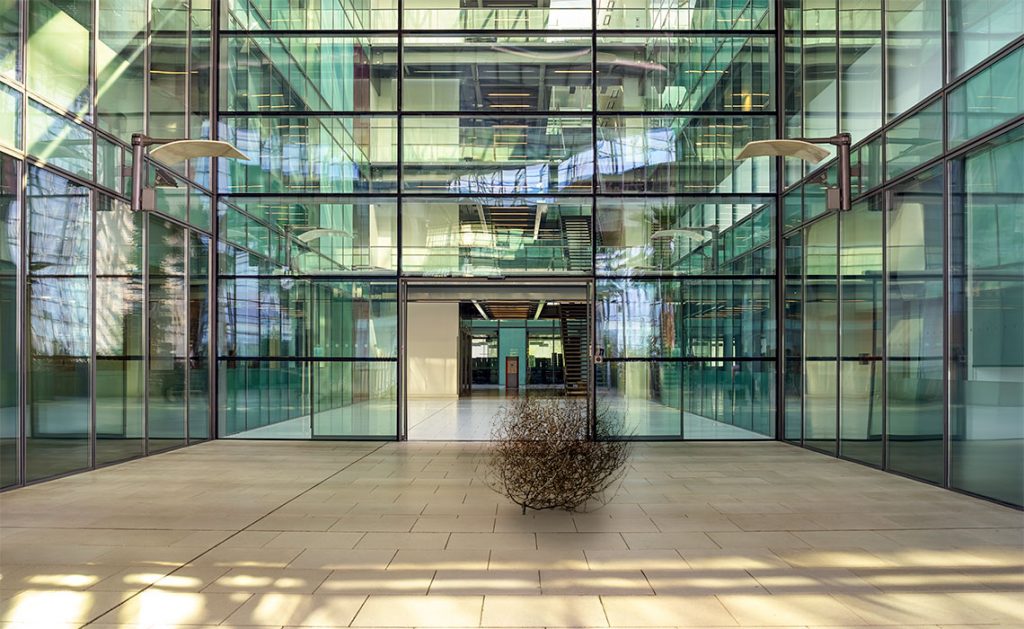The ongoing response to the COVID-19 pandemic has seen an unprecedented shift in the number of people working from home. The work-from-home trend has left many office buildings and other high-occupancy buildings operating with fewer onsite staff than ever before.
During periods of low occupancy, property managers need to balance the climate needs of security, maintenance, reception, and other essential staff still on the premises with the need to scale down their HVAC requirements to save energy.
Here are nine ways you can optimize your HVAC energy consumption while your building has low occupancy:
1) Determine Heating/Cooling Climate Control Setpoints
With an unoccupied building, you can consider temperatures beyond your typical weekend setpoints. When doing so, take your local climate control into account, as well as your new BTU levels.
BTU levels are determined by the heat sources in your building, including tenants and support systems such as electrical and IT. HVAC systems are usually calibrated to certain BTU levels for typical occupancy, not low occupancy. It won’t be enough to simply adjust the thermostats when determining your low occupancy temperature levels – you’ll have to factor in low BTU levels as well.
Program your new settings into your building automation system (BAS). Any zones not connected to your BAS require manual adjustment.
2) Operate With One Boiler And Chiller For Improved Climate Control
Consider operating only one boiler for heating and one chiller for cooling during times of low occupancy. These can be run with adapted setpoints and can be started or stopped as needed. Consult with your HVAC service partners for guidance on reducing or shutting down steam or hot water boilers which may not be required for the time being.
3) Utilize Your Variable Speed Drives
Some systems have fixed speed drives that maintain consistent energy use regardless of output. Variable speed drives (VSDs) can inherit partial load conditions, which lowers amperage and reduces energy output. VSDs are available on your chillers, boilers, and other HVAC components such as fan coil units and single-zone air handlers. You can automate VSDs connected to your BAS, but you will have to manually adjust the VSDs that aren’t.
4) Run Components Economically Where Possible
HVAC components such as chilled beams, fan coil units, thermal units, and radiant heating and cooling units can all be run in economy mode during low occupancy periods.
5) Decrease Indoor/Outdoor Air Exchange
You will still need to vent out particles and maintain carbon dioxide dilution during low occupancy periods but at a reduced rate. Individual air handling units should be adjusted for climate control depending on the requirements for outside air and indoor temperature needs in separate zones.
6) Keep An Eye On Humidity Levels
Continue to adequately maintain indoor dew points to avoid mold and moisture within your system. If dew points are too low, condensation could form on cold HVAC components and sensitive building materials. Conversely, if dew points are too high, your building could see humidity levels over 80%.
7) Climate Control In Unused Areas
Property managers can still accommodate the needs of remaining onsite staff within the spaces they use, such as offices, corridors, and reception areas. However, other areas such as conference rooms, lunchrooms, and storage rooms will likely not be used as often, if at all. Unused spaces can be adjusted for the lower heating or cooling demand. It’s crucial to maintain typical setpoints in server closets and IT rooms to avoid damage or downtime.
8) Continually Monitor Your Building’s Response
Until recently, operating under deep efficiency or low occupancy conditions was somewhat rare. It’s hard to predict how your building will respond to these conditions. Monitor its environment, power, and safety conditions regularly to avoid potential hotspots, moisture problems, and other issues.
9) Take Note Of Your Changes For Future Reference
Keeping records now of what you changed for low occupancy will make returning to the usual settings easier when your building resumes normal operations and capacity. Without these records, you may neglect to adjust something and cause HVAC performance, occupant comfort, and safety issues upon reopening.
It’s a good idea to have your HVAC service partners perform a complete inspection of your system once you get the “all clear” to welcome occupants back to your building.
Complete HVAC inspections include replacing filters and steam-generating cylinders, inspecting boilers, valves, and heat pumps, cleaning humidifiers, and much more. These maintenance checks go a long way to maintain low energy costs, even as occupancy levels return to normal.
As always, we’re here to answer your questions about your commercial HVAC system and help you find ways to save energy and extend the life of your system components. Feel free to call or email our team anytime.
Gregg Little, Paul De Thomasis, and Hugo Lopes are co-owners of Springbank Mechanical Systems. They can be reached at 905-569-8990, or via email at gregg@springbank.com or paul@springbank.com or hugo@springbank.com.

